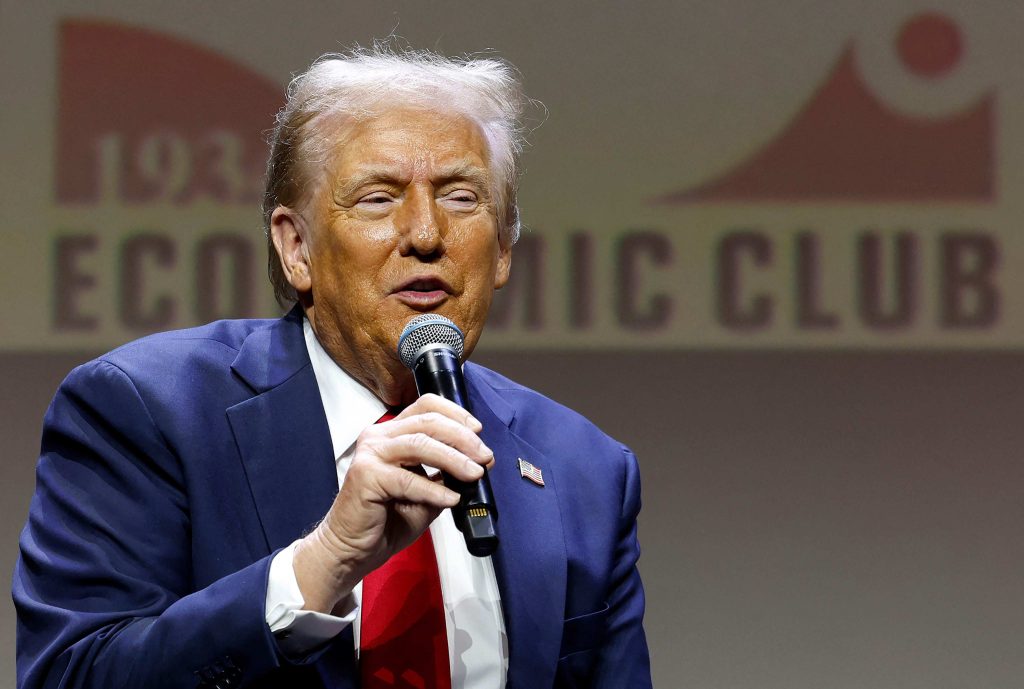Trump Aims to Revamp Trade Agreement with Mexico and Canada
3 min read

Former President Donald Trump is reiterating his commitment to revitalizing American manufacturing and restoring jobs by proposing a revision of the trade agreement with Mexico and Canada. This time, however, instead of targeting the long-standing North American Free Trade Agreement (NAFTA), which he frequently criticized as the “worst trade deal ever made,” Trump is focusing on renegotiating the deal he established: the US-Mexico-Canada Agreement (USMCA).
Signed into law in 2018, the USMCA officially took effect in January 2020, replacing NAFTA. At the time of its signing, Trump touted the USMCA as “the most modern, up-to-date, and balanced trade agreement in the history of our country, with the most advanced protections for workers ever developed.” Yet, he now believes there is room for improvement.
During a recent speech at the Detroit Economic Club, Trump announced his plans to invoke the six-year renegotiation provision embedded within the USMCA. “Upon taking office, I will formally notify Mexico and Canada of my intention to invoke the six-year renegotiation provision of the USMCA that I put in,” he declared. This provision mandates a review of the agreement by the three signatory countries six years after its implementation.
In an interview with Fox News’ Maria Bartiromo, Trump elaborated on his intentions to enhance the deal without undermining it. “I want to make it a much better deal. I want to take advantage, now, of the car industry,” he stated, indicating a specific focus on improving conditions for the automotive sector.
Trump isn’t alone in his desire to review the USMCA; Vice President Kamala Harris has also expressed interest in utilizing the review process. As the Democratic presidential nominee, she was one of ten U.S. senators who voted against the USMCA during its initial approval. “I knew it was not sufficient to protect our country and its workers,” Harris said in a recent statement, highlighting her concerns over the agreement’s effectiveness.
In 2020, following the Senate vote, Harris raised alarms about the environmental provisions within the USMCA, arguing they fell short in addressing climate change adequately. Her stance indicates a growing interest among some political leaders to reassess trade agreements to better protect both workers and the environment.
The USMCA brought several significant updates compared to its predecessor, NAFTA. One of the most notable changes is the new requirement for a higher percentage of vehicle parts to be sourced from North America. Under the USMCA, 75% of a vehicle’s components must be produced within the three participating countries, up from the previous threshold of 62.5%. This change aims to strengthen local manufacturing and reduce reliance on overseas suppliers.
Additionally, the agreement mandates that a greater proportion of vehicle parts be made by workers earning at least $16 per hour. This provision is intended to elevate labor standards and bolster the earnings of those involved in the automotive supply chain.
The USMCA also introduced comprehensive benefits for the technology sector through a dedicated chapter on digital trade, an area not addressed in the original NAFTA. This chapter reflects the evolving nature of global commerce and the increasing importance of technology in trade agreements.
Moreover, the USMCA includes robust labor rules and environmental protections, aiming to ensure fair practices and sustainable development across the member nations. These measures were integral in garnering support for the agreement, as they sought to address criticisms of NAFTA’s impacts on jobs and the environment.
As Trump looks to reengage with Mexico and Canada for a new round of negotiations, the outcome will likely hinge on balancing economic interests with worker protections and environmental considerations. Both Trump and Harris’s ambitions to reassess the USMCA signal a broader acknowledgment of the need for trade agreements to evolve in response to contemporary challenges. The negotiations ahead could potentially reshape the landscape of North American trade, with implications for workers, industries, and environmental policy.